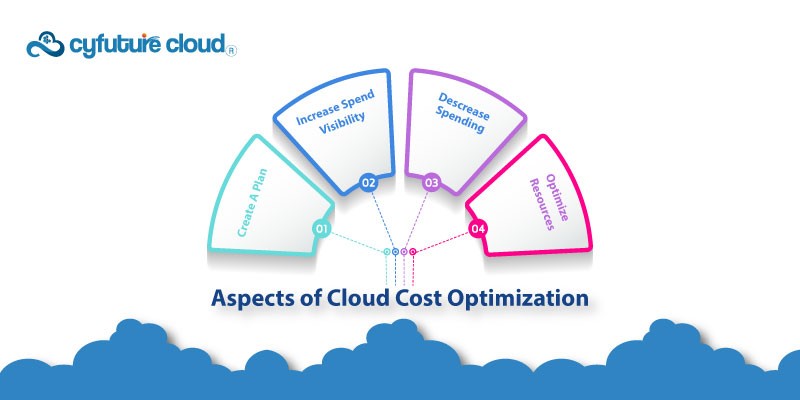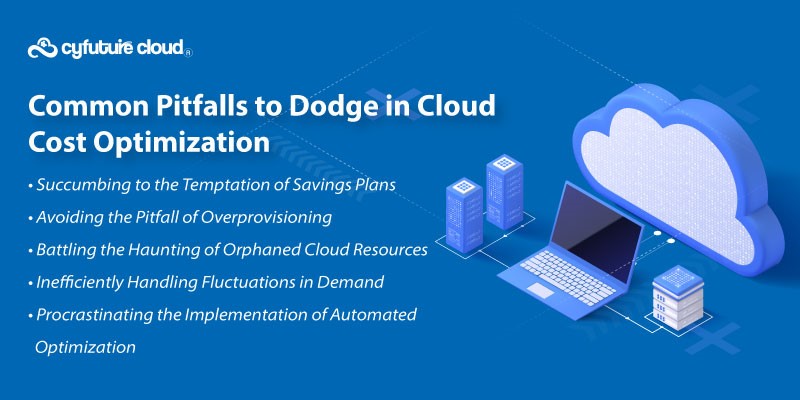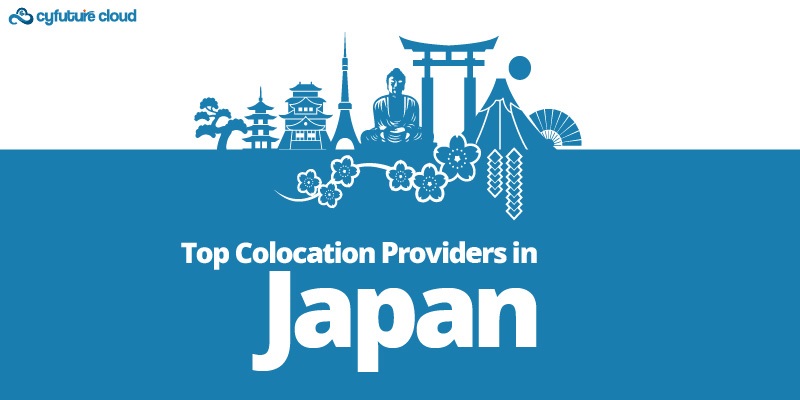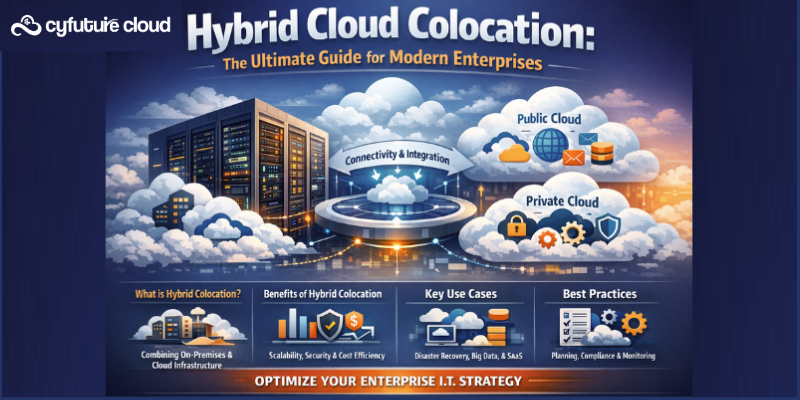Table of Contents
- What Is Cloud Cost Optimization?
- How Cloud Hosting Slash Costs Without Sacrificing Quality
- 1. Evaluate Pricing and Billing Details
- 2. Establish Budget Guidelines
- 3. Detect Underutilized Resources
- 4. Identify and Consolidate Idle Resources
- 5. Optimize Service Sizing
- 6. Embrace Reserved Instances
- 7. Harness the Power of Savings Plans
- 8. Minimize Data Transfer Costs
- 9. Choose Between Single or Multi-Cloud Deployment
- 10. Vigilantly Monitor Cost Anomalies
- 11. Employ Appropriate Storage Solutions
- 12. Optimize Cloud Costs Across Every SDLC Phase
- 13. Identify and Minimize Software Licensing Costs
- 14. Embrace Cloud-Native Design
- 15. Track Cost Center Spending
- Cloud Cost Optimization with Cyfuture Cloud
- The bottom line-optimize tomorrow’s costs today
- Frequently Asked Questions (FAQ)
What Is Cloud Cost Optimization?
Cloud cost optimization revolves around the precise allocation of cloud resources to individual workloads or applications. This process is aimed at achieving both cost efficiency and alignment with your unique requirements. It entails a thoughtful balance, considering factors like performance, cost, compliance, and security to ensure your cloud server price in India harmonize seamlessly with your organizational objectives.
Each workload in a cloud environment is unique, and its demands can shift over time. To keep your cloud expenses in check, it’s crucial to pinpoint performance benchmarks for each workload. This involves drawing on your domain expertise and analyzing real operational data. The goal of this optimization process is to cut costs while still meeting those critical performance benchmarks.
Cloud cost optimization is an ongoing endeavor, not a one-time task. It continually adjusts to the changing demands of your applications and the dynamic terrain of cloud server price in India and service choices. Given the intricacy of cloud setups, effective optimization relies on detailed metrics, thorough analytics, and the use of automation tools.
How Cloud Hosting Slash Costs Without Sacrificing Quality

This is part of an extensive series of guides about cloud server price in India. The following best practices can help you optimize the cost of your cloud environment:
1. Evaluate Pricing and Billing Details
Cloud service providers furnish comprehensive billing information outlining the expenses associated with their services. This data can be harnessed to pinpoint areas of high expenditure and enact measures to save costs. It’s important to prioritize and scrutinize services and workflows with significant spending. Having a clear understanding of cloud costs empowers you to make judicious financial decisions and prevent unnecessary expenses.
2. Establish Budget Guidelines
You can effectively manage expenses by ensuring that all stakeholders are well-informed about the objectives and financial boundaries for each project. Avoid selecting arbitrary figures and instead encourage open communication between engineering leaders, product management, and executive teams to grasp the specific cost prerequisites.
Define these requirements in alignment with the planned product packaging and delivery strategy. For instance, consider whether it’s a free trial or an enterprise plan. These requirements should be taken into account alongside other criteria like speed and resilience during the planning and development stages.
Creating a monthly budget is an essential aspect of shaping your cloud hosting strategy. The specific budget can vary according to your organization’s unique needs. Nevertheless, having a clearly defined budget is pivotal for shaping your overall spending strategy and optimizing expenses.
3. Detect Underutilized Resources
Efficient cloud cost management involves identifying resources that are not in active use, as these can be a source of unnecessary expenditure. Sometimes, administrators and developers provision temporary servers for specific tasks and inadvertently overlook their de-provisioning once the job is completed. Similarly, storage attached to terminated instances might be forgotten by administrators.
Such oversights can lead to increased bills from AWS or Azure, charging for resources that the organization no longer utilizes. An effective cloud cost optimization strategy aids in the identification and elimination of unused or unattached resources, streamlining expenses.
4. Identify and Consolidate Idle Resources
Similar to the aforementioned practice, optimizing cloud costs can be achieved by identifying and consolidating idle computing resources. Cloud providers typically impose charges for idle resources, even when they are not actively used. You can enhance cost-efficiency by recognizing and merging these resources to reduce expenses. For instance, if your CPU utilization is only at 10%, but you are being billed for 100%, it signifies a significant waste of computing resources.
Locate all idle resources and combine them to trim costs. There’s no necessity to retain idle resources in anticipation of busy seasons or traffic spikes. Leveraging cloud features like auto-scaling, load balancing, and on-demand options allows you to scale up capacity as needed.
5. Optimize Service Sizing
The process of right-sizing involves a careful evaluation of computing services, adapting them to the most efficient size. Manual sizing can be challenging due to the multitude of potential combinations, including considerations such as memory, graphics, database, storage capacity, and throughput options.
To simplify this, you can utilize right-sizing tools that provide recommendations for changes across various instance families. This approach not only reduces cloud server price in India but also maximizes the utilization of existing resources, ultimately leading to peak performance.
6. Embrace Reserved Instances
Reserved instances (RIs) represent a cost-effective solution in the cloud, offering substantial price reductions. When you invest in RIs from a cloud provider, you make a commitment to use a specific instance type, often within a designated region or availability zone, for a duration of 1 or 3 years. In return, most cloud providers extend discounts of up to 75%. Because this approach involves an upfront payment, it’s crucial to conduct thorough research and align your choices with your historical instance usage. AWS also provides Savings Plans programs, which provide similar discounts while permitting more flexible usage.
7. Harness the Power of Savings Plans
Savings Plans present a versatile pricing model that can result in savings of up to 70% on your AWS consumption. This model delivers consistently low prices, akin to RIs, contingent on your commitment for one year or three years.
8. Minimize Data Transfer Costs
The process of moving data to and from a public cloud can sometimes come with a hefty price tag. Cloud providers frequently impose data egress fees for transferring data within their platforms or between different regions. To optimize your cloud expenses, it’s advisable to curtail unnecessary data transfers.
Begin by evaluating your cloud vendor’s transfer fees and adjusting your cloud architecture to limit essential data transfers. For instance, you can mitigate superfluous transfers by migrating on-premises applications that frequently access cloud data to the cloud itself.
Additionally, weigh the costs of the various transfer methods designed to secure and expedite data transfers between the cloud and private data centers. Compare the expenses associated with utilizing a dedicated network connection service, such as AWS Direct Connect, Google Cloud Interconnect, or Azure ExpressRoute, against those of a physical transfer device like AWS Snowball or Azure Data Box.
9. Choose Between Single or Multi-Cloud Deployment
Multi-cloud deployments offer flexibility and help mitigate vendor lock-in, yet they can incur higher expenses. Opting for a single vendor can unlock potential discounts through bulk purchases, but transitioning between various cloud platforms can be cumbersome and demand additional training. It’s essential to evaluate whether a single-vendor or multi-cloud approach aligns with your organization’s specific requirements.
10. Vigilantly Monitor Cost Anomalies
Utilize the Cost Management console to establish budgets, forecast AWS expenditures, and enhance overall cost efficiency. Within this console, you’ll find a Cost Anomaly Detection feature powered by machine learning, which diligently tracks usage and costs to pinpoint spending irregularities. Set up alerts to promptly notify you when you approach or surpass anticipated spending thresholds. Once you’ve dissected the root causes of anomalies, you can take corrective actions to forestall unexpected costs and stay on course with your planned budget.
11. Employ Appropriate Storage Solutions
Amazon S3 is a highly popular cloud storage choice known for its user-friendliness, seamless integration with other AWS or external services, and virtually limitless storage capacity. Nevertheless, AWS offers a range of storage tiers with significantly divergent costs, so selecting the appropriate tier is pivotal to avert overspending. You can leverage S3-Intelligent Tiering to automatically track your usage patterns and opt for the most suitable storage tier.
12. Optimize Cloud Costs Across Every SDLC Phase
Cost considerations shouldn’t be an afterthought limited to post-product launch. Instead, they should be integrated throughout the entire software development lifecycle (SDLC). Here’s how you can seamlessly weave cost optimization into the SDLC:
- Planning: Use cost data to substantiate your budget, guiding technical debt-related decisions and shaping the product roadmap. This practice aids in reducing unforeseen expenses and allows for rapid budget adjustments as needed.
- Deployment and Operation: Swiftly identify unforeseen expenditures and make timely adjustments to costs and budgets.
- Design and Build: Record the data necessary for making cost-effective architectural choices. This data informs planned spending reports and helps determine the unit costs of sold goods.
- Monitoring: Continually reassess costs by team, feature, and product to report operational expenses and gauge return on investment (ROI) aligned with business objectives. Every engineering decision carries an associated cost, so shifting cost optimization left makes each stage an opportunity to maximize cloud ROI as early as possible.
13. Identify and Minimize Software Licensing Costs
Software licensing represents a significant portion of cloud operational expenses. Managing licenses manually is challenging and heightens the risk of paying for unused licenses. In the AWS Marketplace, you can find various commercial and public Amazon Machine Instances. License tracking tools can help identify idle or unnecessary licenses, facilitating cost reduction.
14. Embrace Cloud-Native Design
Replace existing cloud systems with more cost-efficient alternatives that leverage cloud-specific capabilities. For instance, designing a system with auto-scaling ensures you only pay for the servers you actively use. The Well-Architected Tool provides best practice recommendations for cloud architectures.
Additionally, AWS’ extensive documentation and expertise can aid in designing your system and reducing costs through cloud-native principles. Note that cloud-native design demands specific skills, so you might require guidance. Typically, organizations modify existing cloud infrastructure rather than starting from scratch.
Your design should strike a balance between performance, cost optimization, and other considerations aligned with your organization’s priorities and objectives. For instance, while a swift DevOps pipeline in the cloud is beneficial, it may not necessarily reduce costs.
15. Track Cost Center Spending
Different teams may independently manage their cloud budgets, necessitating an effective means of tracking their spending. One approach is to assign each cost center a separate AWS account to simplify reporting. When multiple teams with distinct budgets share a single account, attributing costs to the responsible teams becomes challenging.
Implementing a standardized method for identifying cloud resource ownership, such as applying resource tags, not just naming standards, can greatly aid in identifying resources and their owners throughout their lifecycle. Align cost centers with the required reporting granularity, such as department or individual user.
In larger organizations, configuration management databases are often used to track tagged cloud resources. Metadata also facilitates cost optimization and resource prioritization, allowing for lower underutilization thresholds for less critical resources. Resource tags should include contacts for the resource owner to facilitate communication.

Common Pitfalls to Dodge in Cloud Cost Optimization
- Succumbing to the Temptation of Savings Plans
- Avoiding the Pitfall of Overprovisioning
- Battling the Haunting of Orphaned Cloud Resources
- Inefficiently Handling Fluctuations in Demand
- Procrastinating the Implementation of Automated Optimization
Cloud Cost Optimization with Cyfuture Cloud
While public cloud providers offer native tools for monitoring your cloud spend, and even provide recommendations for potential cost reduction, they stop short of actually implementing any of those optimizations for you.
This is where Cyfuture Cloud’s portfolio can help. Cyfuture Cloud not only provides comprehensive visibility into what is being spent on your cloud compute and by whom, but also:
- Generates an average saving of 68%
- Guarantee continuity for instances.
- Manage RIs and Saving Plans portfolios.
- Maximize savings for DevOps teams.

The bottom line-optimize tomorrow’s costs todayCloud cost optimization is not a single event but a continuous journey, and it’s a responsibility that extends beyond IT to involve the entire organization.
Regularly scrutinizing and evaluating your cloud server price in India is essential to confirm that you are utilizing the most budget-conscious solutions that align with your requirements. By incorporating the strategies outlined in this article, you can proficiently govern your cloud expenditures and guarantee that your organization maximizes the benefits of its cloud investment.
Frequently Asked Questions (FAQ)
1. How do I reduce my cloud cost?
Ten ways to reduce cloud costs
- Identifying mismanaged resources
- Monitor cost anomalies
- Use auto-scaling to reduce costs
- Use reserved instances (RI)
- Consider moving to a microservices environment
- Use heat maps to understand what’s going on in your system
- Eliminate the shadow IT practices
- Consider multi-cloud vs. single cloud
- Utilize real-time analytics to make quick cost decisions.
- Using third-party cloud billing reporting tools
2. What are the four pillars of cost optimization?
Cost Optimization Pillars
- Define and enforce cost allocation methods.
- Define metrics, set targets, and review at a reasonable cadence.
- Provide proper training, progress goals visibility and incentives to the ream.
- Assign an individual or a team to take optimization responsibility.
3. What are the best practices for cloud cost optimization?
There are ten best practice areas for cost optimization in the cloud:
- Identifying mismanaged resources
- Monitor Cost Anomalies
- Use auto-scaling to reduce costs
- Use reserved instances (RI)
- Consider moving to a microservices environment
- Use heat maps to understand what’s going on in your system
- Eliminate the shadow IT practices
- Consider multi-cloud vs. single cloud
- Utilize real-time analytics to make quick cost decisions.
- Using third-party cloud billing reporting tools
4. What is AWS cost optimization?
Optimizing AWS costs is not a big challenge if you understand their flexible pricing model and practices. You can take control of cost while continuously optimizing your spending, and building modern, scalable applications to meet your needs.
Explore AWS’s breadth of services and pricing options offer the flexibility to manage your costs effectively and keep the performance and capacity you require.
Recent Post
Send this to a friend

 Server
Colocation
Server
Colocation CDN
Network
CDN
Network Linux
Cloud Hosting
Linux
Cloud Hosting Kubernetes
Kubernetes Pricing
Calculator
Pricing
Calculator
 Power
Power
 Utilities
Utilities VMware
Private Cloud
VMware
Private Cloud VMware
on AWS
VMware
on AWS VMware
on Azure
VMware
on Azure Service
Level Agreement
Service
Level Agreement 




















